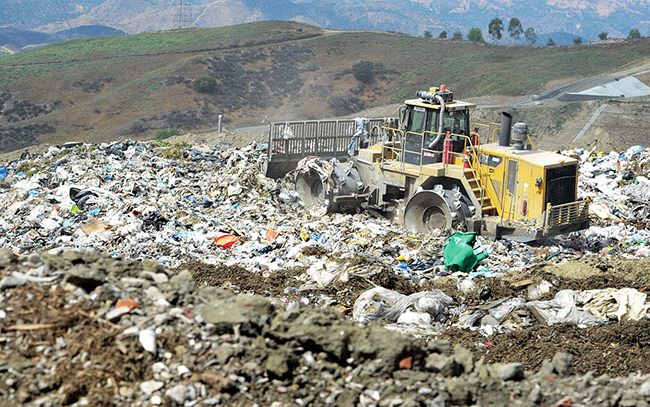VIEWPOINT Setting the record straight on water
by Mayor Larry Schroeder
Claremont’s recent fight to take over our water system has come to an end after more than a decade. On October 10, the city council unanimously approved an agreement with Golden State Water Company that ends a six year legal battle and reduces the legal judgment fees Claremont owes to Golden State.
While the city council is disappointed in the outcome of the case, settling the legal fees with Golden State Water in exchange for dropping the city’s appeal will save the city close to $5.8 million.
Over the last 10 years, the community supported the city council in its battle for local control over the water system. At every step of the process, the city council consulted our residents to ensure this was the direction the community wanted to proceed. This process was driven by Claremont residents, who clearly voiced their support for a takeover of the water system by sending emails, writing letters to local papers, and showing up by the hundreds to public hearings.
Throughout the process, the city council was as transparent as possible with the public, which put us at a disadvantage in the litigation process. The city council held more than 15 public meetings and made all court documents and staff reports available to the public. While this openness in sharing information helped inform our residents, it also gave Golden State Water an outline of our case and made negotiations difficult.
Critics who claim the city council was hiding or deliberately misleading the public are simply wrong.
The city council openly discussed that Claremont’s takeover of a private water system was unlike other traditional eminent domain cases. Eminent domain litigation involving utilities is complex and Claremont’s case was ground-breaking. At no time, did the city council guarantee we would win. Just like any other litigation, no one can predict the outcome.
In 2012, at the beginning of the acquisition process, the city presented the possible risks and expense of litigation at a town hall meeting. These risks and costs were reiterated throughout the process. Each appropriation for money related to the acquisition was made in a public meeting. Following the judge’s decision on January 31, 2017, the city council discussed the appeal process and provided information on the cost and process moving forward. The community repeatedly implored the city council to proceed.
The city council and staff have been criticized for relying on Best Best & Krieger (BB&K) for legal representation on this process. BB&K hired outside consultants to provide the expert analysis and testimony needed for the city’s case. In addition, the city council hired a separate law firm to review the appeal case and another law firm to negotiate the settlement.
The city spent a total of $6.5 million on water acquisition efforts. Out of the $6.5 million, approximately $3.87 million was spent in legal fees to BB&K over six years and the remaining $2.63 million was for outside consultants and attorneys. The legal fees included the defense of lawsuits after Golden State sued the city challenging the Environmental Impact Report and demanding the release of confidential documents.
After the judge issued his ruling on the eminent domain lawsuit, the city council hired Horvitz and Levy LLP, one of the state’s top appellate law firms, to review the case and advise the council on an appeal. The city filed a notice to appeal, which was necessary to keep the process moving forward.
Following the appellate attorney’s complete review of the case and judge’s decision, the appellate attorney advised that our chances of winning on appeal were slight. Rather than spend more money on an appeal that we had little chance of winning, the council began negotiating with Golden State to reduce the legal fees the city owed.
Critics have tried to compare Claremont’s settlement and eminent domain case with Ojai’s and Felton’s water system cases. Unlike Claremont, Ojai and Felton were able to settle with private water companies and take control of their water systems. In both the Ojai and Felton cases, the party initiating the takeover was a public water district, not a city.
Casitas Water District in Ojai and San Lorenzo Water District in Felton were water districts operating side-by-side with the private water company they took over. In these cases, the water districts showed a history of lower rates and superior service compared to the private systems they were trying to take over.
Ojai FLOW won an appeal on the use of their finance mechanism, not the eminent domain case. In Felton’s case, Cal Am Water Company chose not to challenge the eminent domain case and moved straight to the valuation jury trial.
Neither Ojai nor Felton received a judgement in their eminent domain cases. Instead, the private water companies chose to negotiate a sale of their systems rather than wait for a decision by a judge. In Claremont’s case, the judge ruled against the city, stating the system was better left in the hands of a private water company.
As the old saying goes, hindsight is 20/20. However, I stand by the decisions this city council made given the information we had at the time. I invite residents to visit the city’s webpage to find a process timeline, documents related to the case and a comparison of Claremont’s case versus the Ojai and Felton cases.
I am confident that after researching this very public process, you will see the city council conducted this process as transparently as possible and with the community’s best interest in mind. The settlement with Golden State closes this chapter of this water fight and saves Claremont money that can now be spent on other priorities.








0 Comments